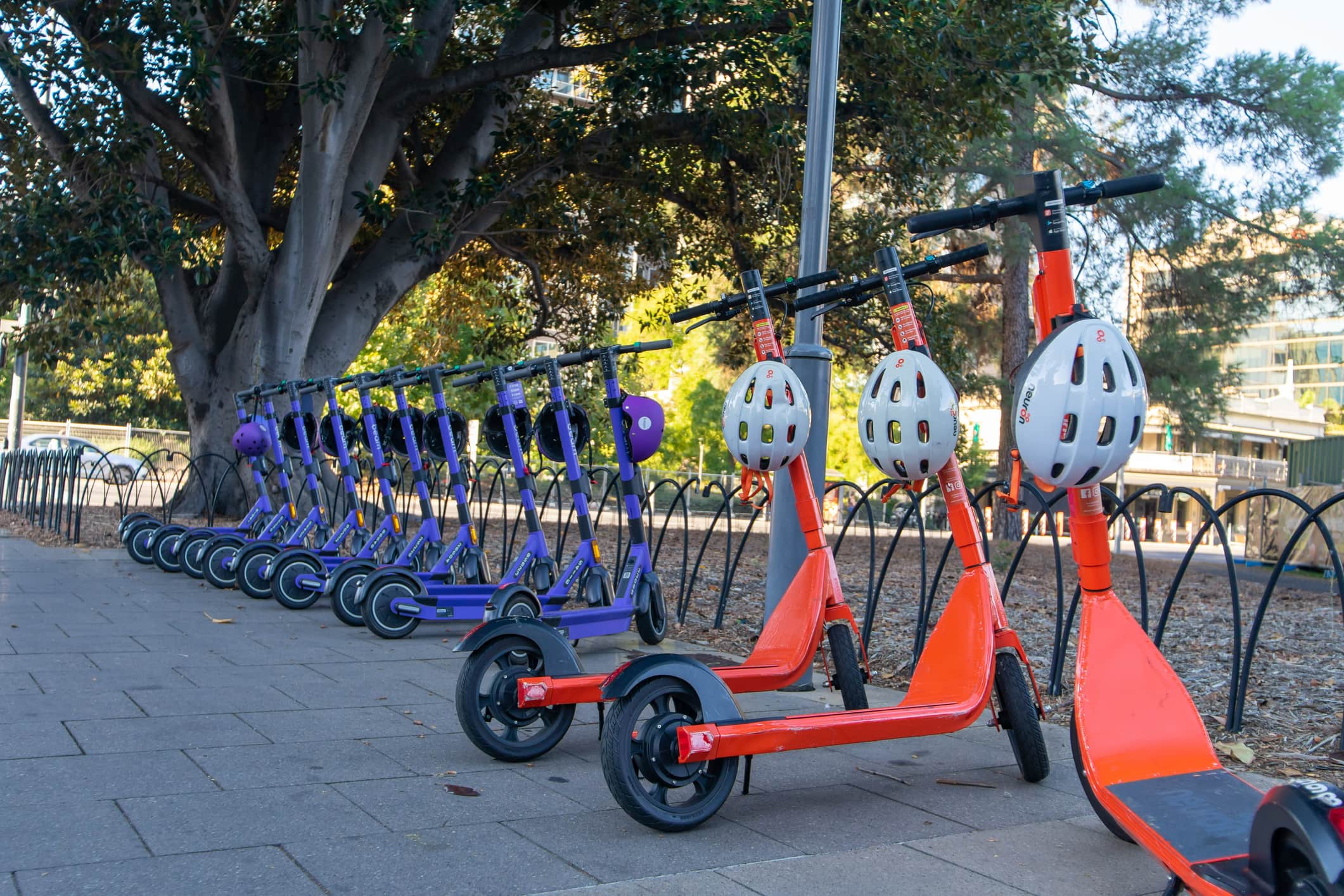E-scooter accidents and injuries on the rise: what to do?
Published on Posted onPlease note that this post was written for Queensland audiences and the information within may not apply to other regions.
E-scooters officially made their entrance to the Australian market via Brisbane in late 2018, and there have since been more than four million trips taken on e-scooters.
Interestingly, data shows between 30 and 50 per cent of e-scooter and e-bike trips were replacing car trips in Brisbane.
There are currently two companies in Brisbane and the southeast offering both e-scooters and e-bikes as part of a three-year deal with Brisbane City Council. Council awarded the contract to Beam, and Neuron Mobility based on the improved safety features and technology of the scooters, making them safer.
News sites frequently writing about noticeable rises in injuries from e-scooters and the like – the most recent being that Gold Coast University reported at least 100 presentations to the emergency departments in 2021 – we thought you’d like to know: what can you do if you’re injured on or by an e-scooter and it wasn’t your fault?
E-scooter facts, crash and injury statistics
Did you know, Queensland is the only state where riders can go above 10km/hr on a footpath?
In Queensland, e-scooters are allowed to travel on footpaths only (and can go up to 25km/hr), whereas e-bikes are allowed on both footpaths and roads (and can also go up to 25km/hr assisted speed).
There have been calls for Australian cities to provide more street space for such micro-mobility activity because of concerns that allowing them to travel such speeds on footpaths is dangerous.
Figures collected by the Jamieson Trauma Institute found nearly 800 people went to hospital after being injured on an “electric personal mobility device” in the 18 months to May 2020. These included e-bikes, e-skateboards, Segway’s and hoverboards, but most of the injuries came from e-scooters that had been hired.
Upper limb fractures and head injuries were the most common. And 54 per cent of those who went to hospitals were not wearing helmets.
An ABC report also stated that 30 per cent of incidents were linked to alcohol use, and majority occurred later at night, and particularly over weekends. Which is why shared e-scooters are locked out of Brisbane’s CBD and Fortitude Valley from midnight to 5am in a six-month safety trial since December 1.
E-scooters and injury insurance claims
Every time someone gets on an e-scooter or e-bike they take a risk, just as we do every time that we get behind the wheel of a car.
But unlike when we drive a car, when you get up on a public electric scooter, you’re not always covered by third party insurance for injuries or property damage. (As was the case with the company that kicked off the e-scooter trend in Brisbane, Lime Scooters).
Luckily, Beam and Neuron both do offer some type of personal accident insurance as protection for lost wages and medical treatment.
Neuron, in fact, are the first rental e-scooter operator to offer a full suite of rider liability, including third party rider insurance through Agile Underwriting Services Pty Ltd– meaning if a rider has an accident, they can be covered for third party injury or damage.
Claims for injuries from an e-scooter accident, however, are quite thorny when comparing to an average car or road accident. For starters, whether you have a claim for personal injury depends on if the e-scooter operator is covered by an insurance policy.
In the case of riding Neuron scooters, you’re generally safe. But the cover depends on the circumstances of the incident and policy terms of service such as whether you were wearing a helmet, or if you’re over the age of 16.
Note: Queensland law states that you’re legally required to wear a helmet if your scooter has an electric motor.
What to do if injured in an e-scooter accident
If you’re injured in an e-scooter accident in Queensland, like an increasing number of people are, seek medical attention and legal advice. Be sure to note:
- Names of parties involved and witnesses
- How the accident happened
- Any insurances held by the operator at-fault


